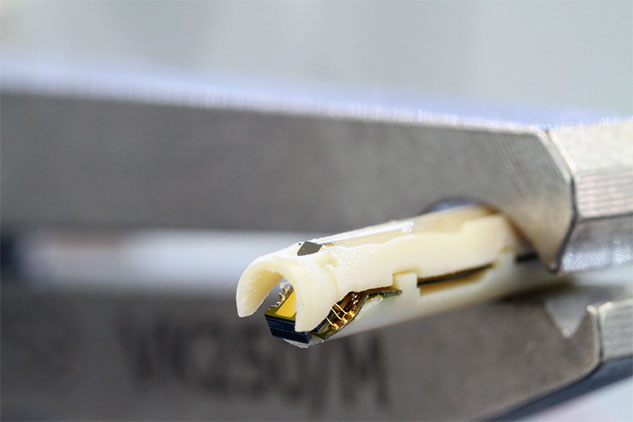Engineers co-created a breakthrough in bladder cancer detection
Bladder cancer is one of the 10 most common cancers worldwide – a high number that can hopefully be reduced thanks to the fruitful collaboration between Scinvivo and Philips. For diagnostics, urologists depend on cystoscopies. Traditional medical imaging techniques only allow them to look at the surface of the bladder wall. This has severe limitations; cystoscopies do not provide all the necessary information needed. “Current technologies cannot show what is going on behind the surface of the bladder wall,” said Marijn van Os, CEO of Scinvivo. “As a result, 1 out of 2 surgeries and follow-ups are unnecessary and 1 out of 5 bladders are removed unneeded.”
To solve this challenge, the medtech company developed a catheter that does allow imaging of tissue structure below the surface. Its excellent resolution enables early-stage tumors as small as 100µm to be detected – a medical breakthrough in the fight against cancer. The engineering teams of Philips MEMS Foundry and Micro Devices played a vital role in developing and manufacturing this catheter.
“A significant improvement”
“The catheter provides this info on demand and will be a significant improvement to determine a fast, precise, and personalized follow-up treatment,” states Marijn van Os, CEO of Scinvivo.
The catheter is a powerful, minimally invasive diagnostic tool that can distinguish between different benign and malignant tissue types. It solves unmet needs for patients and physicians and facilitates the best possible care for these patients while reducing overall costs. The result: Improved quality of life by reducing invasive surgery and the ability to intervene early.

Tackling industrial risks
The collaboration between Scinvivo and Philips started a few years ago with the development and production of their innovative MEMS micro mirror for use in their catheter. This new and unique mirror looks forward inside hollow structures – like bladders. In contrast, current so-called OCT systems can only look sideways.
Philips engineers started with a blueprint of the production process and identified the biggest technical risks with the aim of tackling them early on. This MEMS mirror is approximately one square millimeter in size. Its function is to sweep a scanning laser beam on the bladder wall. The reflected beam then contains properties of the issue of the bladder. This mirror must meet many requirements in order to function optimally.
“It’s a relatively complex product that requires over 100 different processing steps, most of them need to be tuned for this specific product. And all 100 steps need to work flawlessly to yield good micro mirrors. It proved to be a difficult task, but with impressive results.”
Robbert van der Waal
Director Sales and New Business
“It’s a relatively complex product that requires over 100 different processing steps, most of them need to be tuned for this specific product”, said Robbert van der Waal, Director Sales and New Business at Philips MEMS Foundry. “And all 100 steps need to work flawlessly to yield good micro mirrors. It proved to be a difficult task, but with impressive results. Now, we are also helping Scinvivo with the assembly of the catheter. The first catheters will soon be used by several urologists in The Netherlands.”
Cooperative and responsive
The development project has been a close collaboration. Robbert: “Weekly progress review meetings enable us to combine both parties’ knowledge and solve problems together. In this way, we are cooperative and responsive, entirely to Scinvivo’s wishes. Our way of working has really helped to bring good results in an efficient manner. You don’t get that level of intensive cooperation anywhere else. By combining Scinvivo’s knowledge with ours, we came to a beautiful collaboration in which we were really each other’s sparring partners.”
Marijn adds: “We have experienced the work with Philips MEMS Foundry as very pleasant. For Scinvivo, a transparent and intensive way of collaborating is very important to take the right steps in the development of our catheter. We are very pleased that there was no barrier between the project team of Philips MEMS Foundry and our own engineers.”
“For Scinvivo, a transparent and intensive way of collaborating is very important to take the right steps in the development of our catheter. We are very pleased that there was no barrier between the project team of Philips MEMS Foundry and our own engineers.”
Marijn van Os
CEO of Scinvivo
Robbert van der Waal states: “In the coming period, we will bring the process to a higher level of maturity, make more MEMS mirrors to make catheters for clinical trials and then ramp up production. The future vision is to distribute Scinvivo’s catheters all over the world and thereby force a breakthrough in the fight against cancer.”
Find out how we can help to develop and manufacture your MEMS & Micro Devices ›

